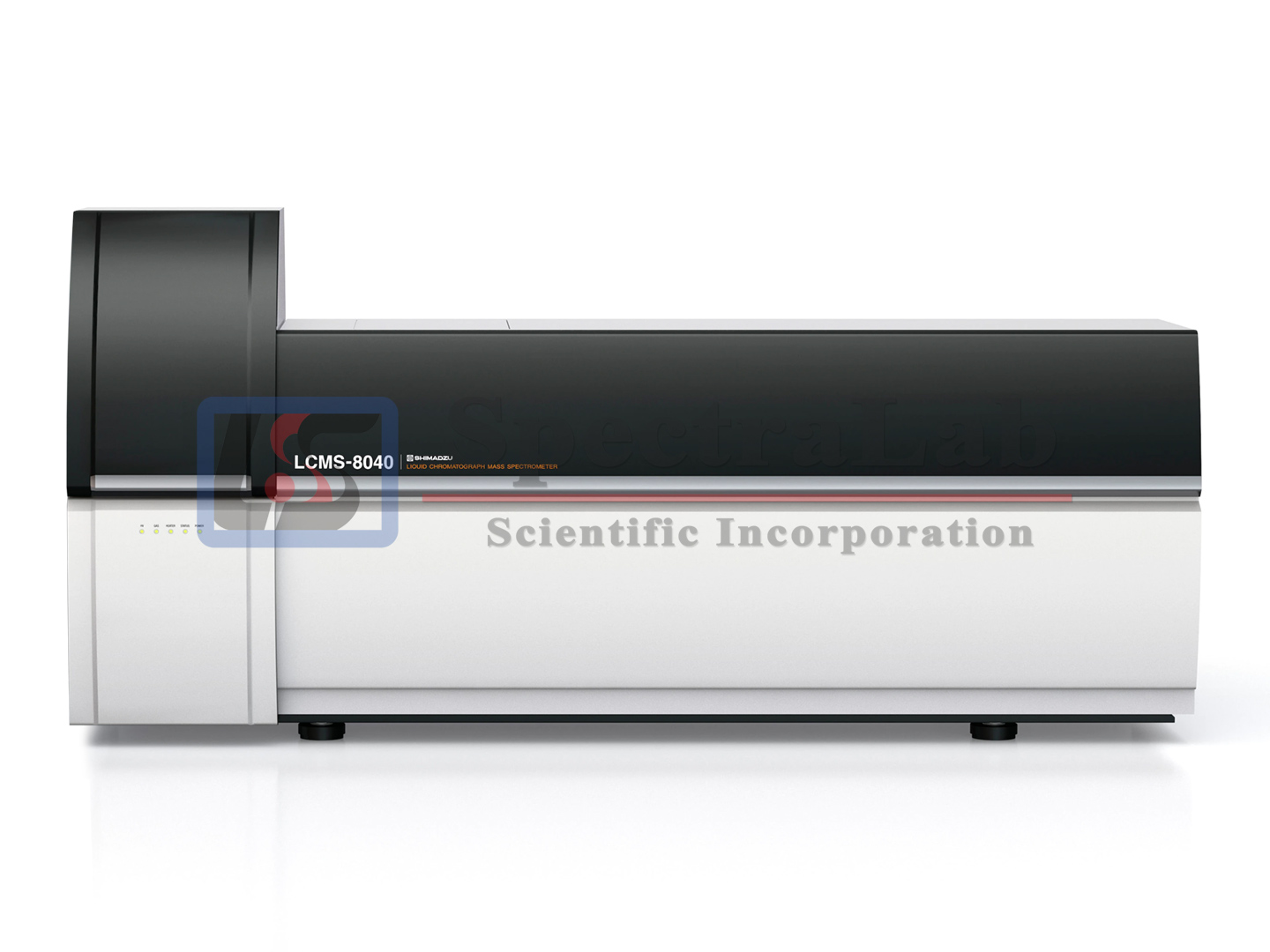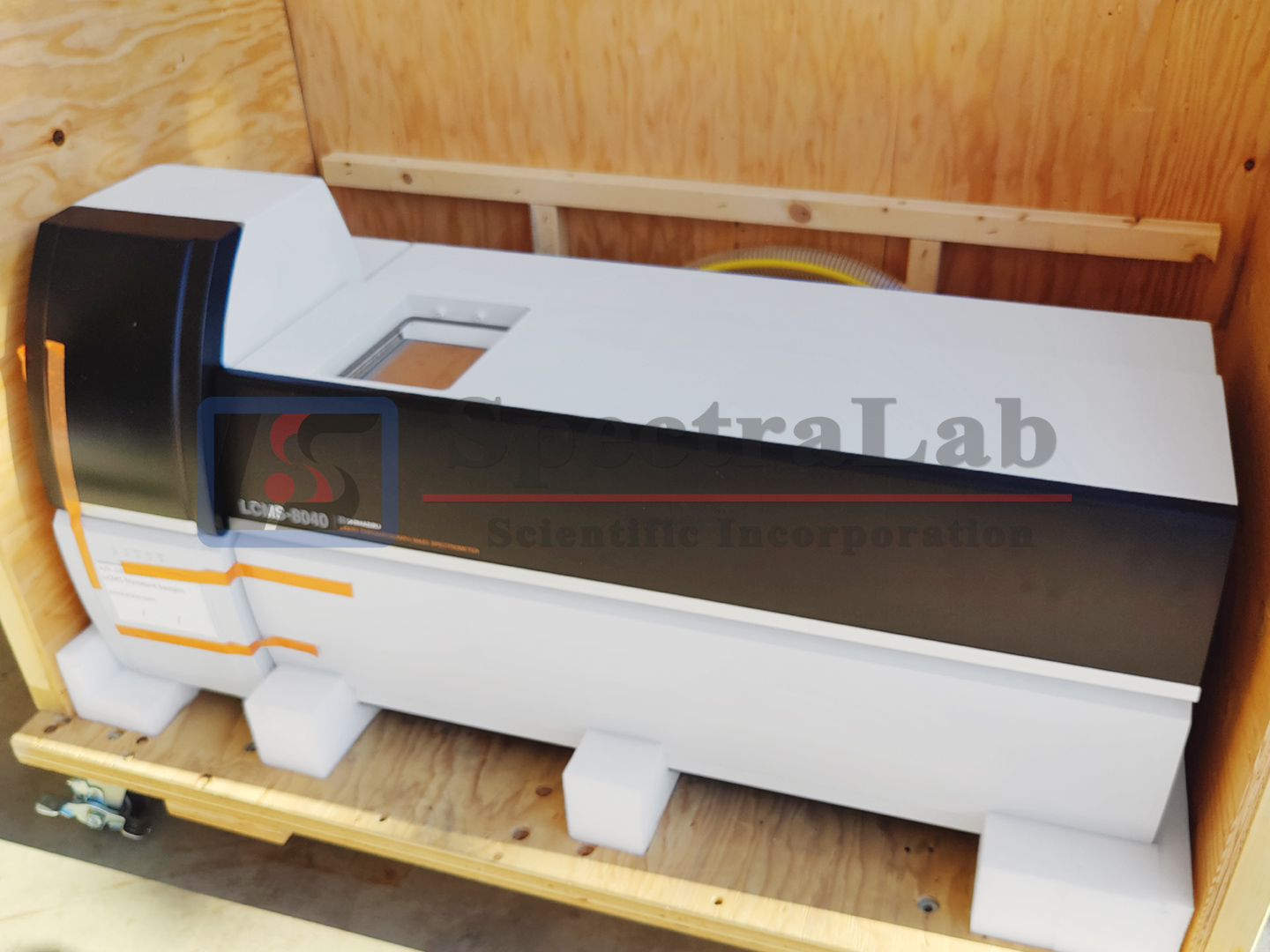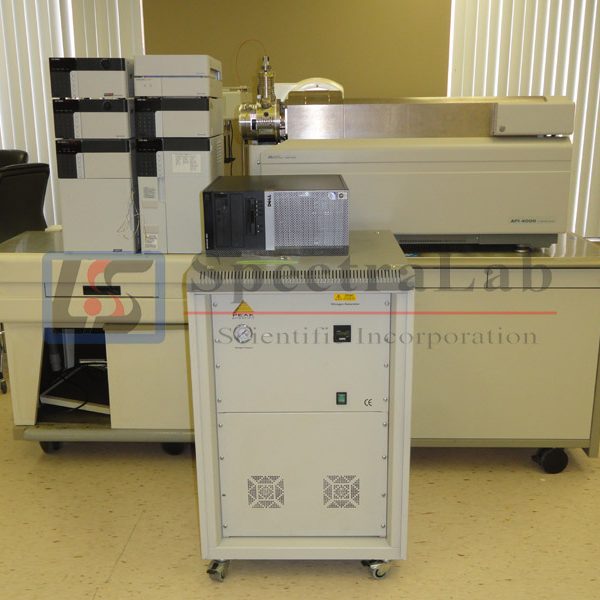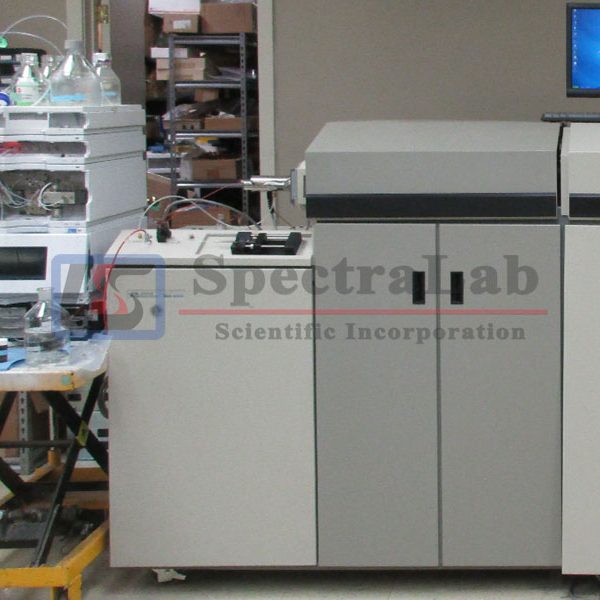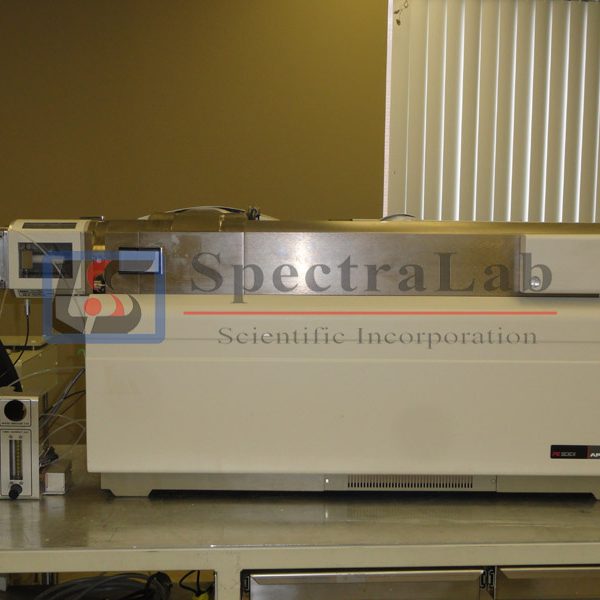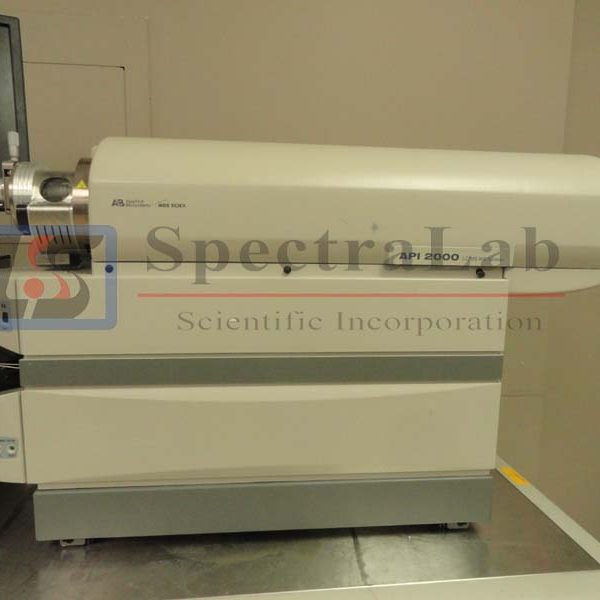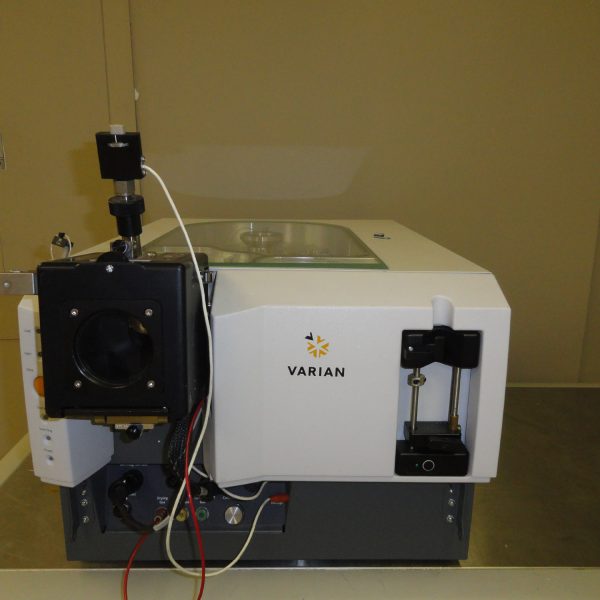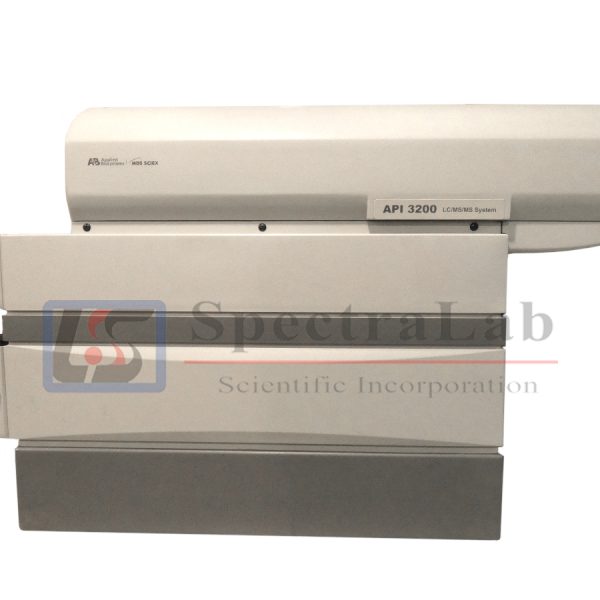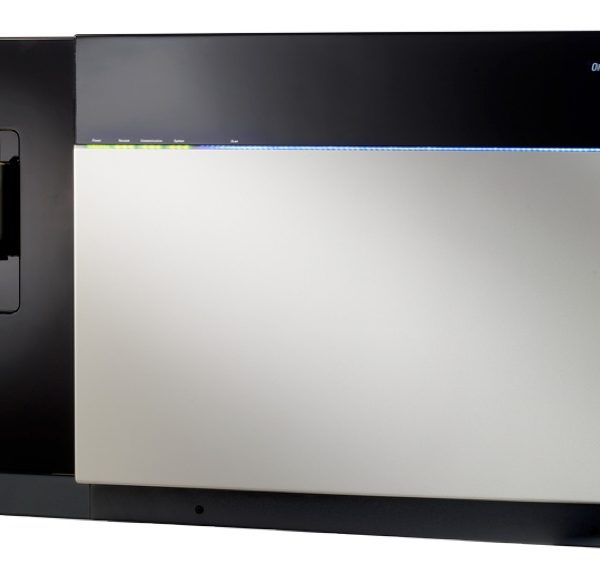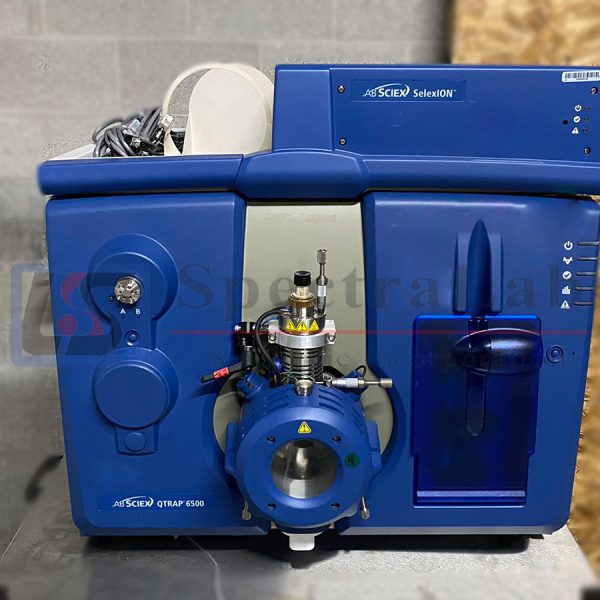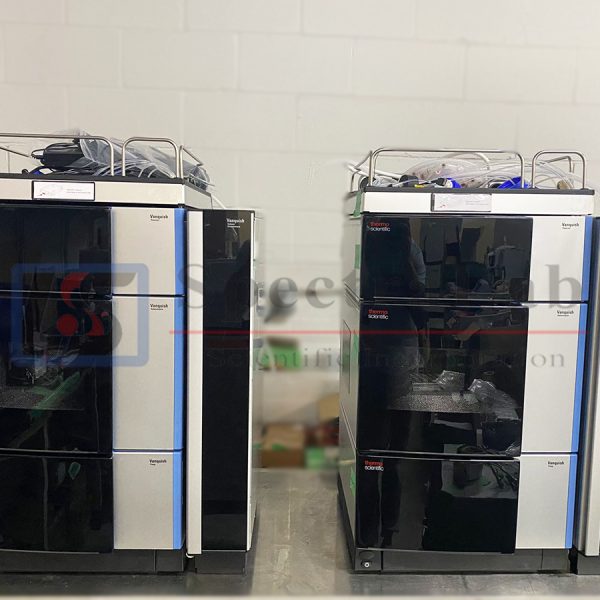System includes:
- New in original package Shimadzu LCMS-8040 Triple Quadrupole Mass Spectrometer
- Shimadzu DGU-20A5R Degasser
- Shimadzu Nexera SIL-30AC Autosampler
- Shimadzu Nexera X2 CTO-30A Column Oven
- Shimadzu Nexera X2 LC-30AD Pump x 2 units
- Shimadzu CBM-20A Controller
- Shimadzu Gradient Valve Regulators
- Edwards E2M28 Roughing Pump
- Windows PC with suitable software data (monitor not included)
- Minimum required cables, tubing and fittings for power and operation
Ultra-High Sensitivity
By incorporating newly improved ion optics and collision cell technology, the LCMS-8040 provides higher multiple reaction monitoring (MRM) sensitivity. A five-fold increase in sensitivity (reserpine, S/N ratio), as compared with that of LCMS-8030 has been achieved by improving ion focusing and minimizing ion losses between multi-pole lenses. These improvements also yield higher sensitivity for scan mode measurements. This higher sensitivity expands the potential range of LC/MS/MS applications.
Ultra-High Speed
The LCMS-8040 was designed to provide significantly higher sensitivity while maintaining the high speed offered by the LCMS-8030. Ultrafast MRM transition speeds, up to 555 MRMs per second, are achieved by Shimadzu’s UFsweeper collision cell technology, proprietary high-precision quadrupole machining capabilities, and unique high voltage power supply technology. In addition, the LCMS-8040 features the fast polarity switching at 15 msec. With this high-speed performance, the LCMS-8040 can dramatically improve analytical throughput.
Ultra-High Reliability
MRM optimization in Shimadzu’s LCMS systems is based on a rapid series of automated flow injection analyses, requiring only minutes to perform. Multiple compounds can be optimized in an unattended sequence, freeing the analyst from tedious work. MRM parameters optimized for the LCMS-8030 can be transferred to the LCMS-8040, making it possible to transfer methods between systems. The LCMS-8040 offers the same ease of maintenance benefits as the LCMS-8030, and all consumables, such as desolvation lines (DL) and ESI capillaries, are interchangeable as well.
Instrument
| Model | LCMS-8040 |
| Mass range | m/z 2 to 2,000 |
| Sensitivity | ESI positive:
1 pg reserpine, S/N>50,000:1 (RMS) ESI negative: 1 pg chloramphenicol, S/N>50,000:1 (RMS) |
| Resolution | R < 0.7 u FWHM and adjustable to 0.5 u |
| Mass stability | 0.05 u / 24 hr |
| Mass accuracy | 0.1 u |
| Cross talk | < 0.0005% |
| Minimum pause time | 1 msec |
| Minimum dwell time | 0.8 msec |
| Scan speed | Max 15,000 u/sec
(0.1 u step: 150,000 data points/sec) |
| Polarity switching time | 15 msec |
| Interface | ESI (Standard),
APCI (Optional), DUIS (Optional) |
| Applicable LC flow rate | ESI 1 µL/min to 2 mL/min |
| MRM transition speed | Max 555 channels/sec |
| Ion source temperature | 500 °C |
| Analysis mode | Q1 Scan/SIM
Q3 Scan/SIM MRM Precursor ion scan Product ion scan Neutral loss scan Synchronized Survey Scan |
Mass Analyzers and Detector
| Mass analyzers | Q1 & Q3 are molybdenum hyperbolic mass filters with pre-rods; Q1 includes post-rods |
| Collision cell | Tapered multipole type ultra-high-speed collision cell (UFsweeper II collision cell) |
| Detector | Secondary electron multiplier with off-axis conversion dynode |
| Ion optics | Q-array focus optics operating in Field-Flow mode, multipole transfer optics |
| Digital detection system | Operates in pulse counting mode for fastest operation |
| Detection mode | Ultra-fast positive/negative ion switching |
| Dynamic range | 7 orders |
| Vacuum system | Rotary pump: 1 unit
Vacuum pumping speed: 28 m3/hr Triple-inlet turbo molecular pump: 1 unit 40 L/sec, 260 L/sec, 210 L/sec |

